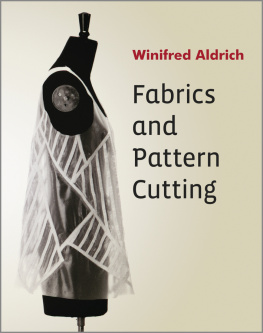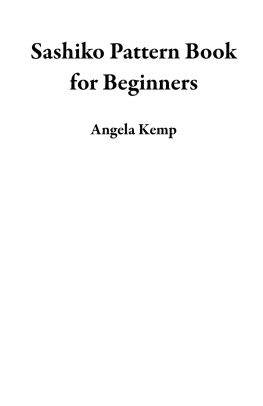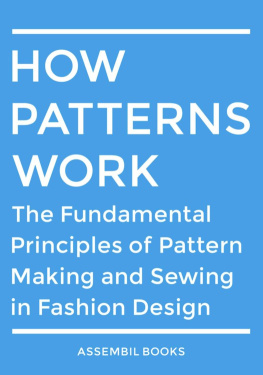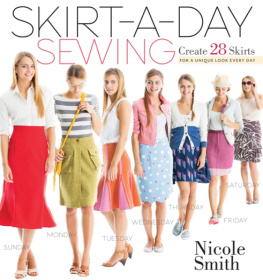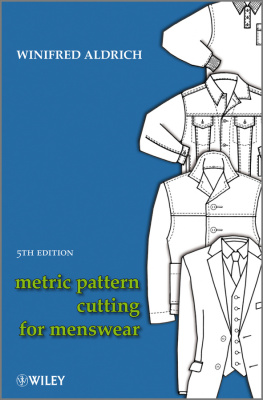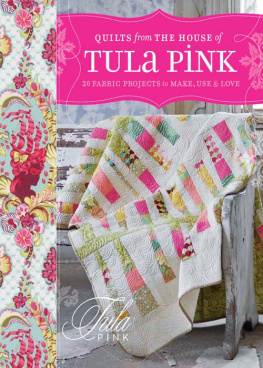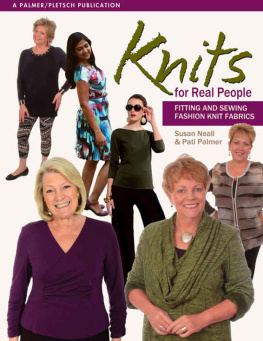
This edition first published 2013
2013 Winifred Aldrich
Registered office
John Wiley & Sons Ltd, The Atrium, Southern Gate, Chichester, West Sussex, PO19 8SQ, United Kingdom
Editorial office
John Wiley & Sons Ltd, The Atrium, Southern Gate, Chichester, West Sussex, PO19 8SQ, United Kingdom
For details of our global editorial offices, for customer services and for information about how to apply for permission to reuse the copyright material in this book please see our website at www.wiley.com.
The right of Winifred Aldrich to be identified as the author of this work has been asserted in accordance with the UK Copyright, Designs and Patents Act 1988.
All rights reserved. No part of this publication may be reproduced, stored in a retrieval system, or transmitted, in any form or by any means, electronic, mechanical, photocopying, recording or otherwise, except as permitted by the UK Copyright, Designs and Patents Act 1988, without the prior permission of the publisher.
Wiley also publishes its books in a variety of electronic formats and by print-on-demand. Some content that appears in standard print versions of this book may not be available in other formats. For more information about Wiley products, visit us at www.wiley.com.
Designations used by companies to distinguish their products are often claimed as trademarks. All brand names and product names used in this book are trade names, service marks, trademarks or registered trademarks of their respective owners. The publisher is not associated with any product or vendor mentioned in this book. This publication is designed to provide accurate and authoritative information in regard to the subject matter covered. It is sold on the understanding that the publisher is not engaged in rendering professional services. If professional advice or other expert assistance is required, the services of a competent professional should be sought.
Library of Congress Cataloging-in-Publication Data
ISBN: 978-1-119-96717-0 (pbk), ISBN: 978-1-118-54814-1 (ebk), ISBN: 978-1-118-54812-7 (ebk), ISBN: 978-1-118-54813-4 (ebk), ISBN: 978-1-118-54815-8 (ebk)
A catalogue record for this book is available from the British Library.
Acknowledgements
We would like to thank the following people who have made the production of this book possible:
Hiroko Aldrich, for her help with the text, research and collation of the book;
David Bell of Assyst Bullmer Ltd, for the images of 3D fabric simulation in Chapter 2;
Bill Skidmore of Huddersfield Textile Society and Helen Rose of Manchester Metropolitan University, for their advice on new fibres;
From John Wiley & Sons Ltd: Hannah Clement, the production editor, for the books production; and particularly Andrew Kennerley, who has supported and monitored every stage of this edition.
Acknowledgements for the Material Used in this and Earlier Editions
We had a great deal of practical help from people and organisations during the production of the earlier editions of the book, but their realisation would not have been possible without the inspiration and support of the following people:
Mark Cooper, who made up nearly all the designs photographed in this book and helped us to construct the fabric boards and throughout the project.
Dina Furtado, the model for the photographs and the drawings.
Professor Newton of the Nottingham Trent University, who gave me time from other duties to work on this book.
Gillian Bunce of the Nottingham Trent University,
Christine Smith, Brian Stanley of the Nottingham
Fashion Centre, for their assistance and the extensive use of its Fabric Resource Library.
Richard Prescott, for his professional advice, high quality photographic printing of the garments and the electronic reproduction of the fabric boards.
Steve Maddox of Colourbase Ltd, for his lighting and technical assistance during the photography of the garment designs.
A group of students attending a course at the Nottingham Fashion Centre who participated in the testing and the revision of my theories.
Alec Aldrich who constructed the testing equipment for the first edition of this book (see Appendix 1). The equipment was used to register the fabric codes associated with the sample garment designs.
Richard Miles of Blackwell Publishing, for his great support of my book.
Other people and companies who provided equipment, information and advice:
David Bell of Assyst Bullmer
Stephen Chalkey of Concept II Research
Len Boxall of Kennet and Lindsell Ltd
Brian Smith of the Nottingham Trent University
Sue Pike of the Nottingham Trent University
Emma Nixey of Nix-E Design
Terry Parkin of TEZ
The fibre manufacturers and associations who provided technical information, and the many fabric companies who supplied samples and sample lengths for the book.
Introduction
The aim of this book is to help fashion and textile students understand the vital part that fabrics play in creating the shape of a design. The excessive information in the earlier edition of this book may have deterred many students, yet it is vital that they gain this skill early in their studies. Therefore this book has simplified, re-organised and updated information from the previous editions.
New developments have taken place in the use of generic (basic chemical source) fibres and also in the technical engineering of the structure of existing fibres. This has produced many new fabrics that have a very different appearance and handle. Designers need to gain a fabric sense and an ability to use it creatively.
There is no substitute for working directly on the dress stand for analysing how fabric works with a human body form. Working in this way offers more opportunity for creating new dimensions of cut. However, most designers working in mass production have the difficult task of translating 3D mental images into 2D pattern shapes. It can take years of experiencing success and failure to do this effectively, and the appearance of new fabrics continually challenges the designers skill. Knowledge of how fabrics will behave is essential in the speculative cutting of new garment shapes.
Fabric technology is not covered in depth in this book, but it offers an introduction to the technology and an overview of fabric sources and ranges. It also directs students to where further information can be found. Tests are used in industry for fabric properties, comparisons between similar fabrics, or their performance in specific conditions. However, this book isolates five major characteristics that determine a garments shape. These are:
weight thickness drape shear stretch
This book shows how they determine the shape of a garment from the simplest wrap to a complex tailored suit.
This book is arranged so that students can use basic principles to work from simple shapes to complex cutting. The flat pattern cutting techniques include direct measurements, working on flat grid drafts and the adaptation of both flat blocks and form body shaped blocks.
Specific Information
Although this book can be used alone, where specific detailed methods are needed, cross references to Metric Pattern Cutting can be made. This book describes how different types of blocks have been developed from simple flat geometric shapes. All the designs are shown on one model, size 10, 175 cm (5ft 9 in) height. The same fashion model was used for the photographic figure images and for the drawings. In order to ensure consistency, a size 10 stand was constructed with the extended back neck to waist measurement of the model. Chapter 13 provides basic images of the model poses and the stand for students to use as templates for technical illustrations.
Next page
